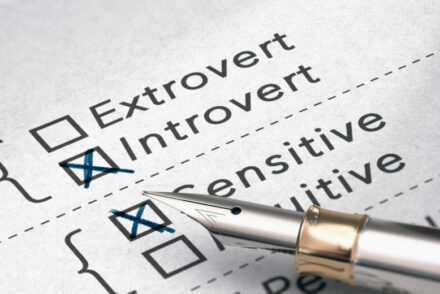Covid-19 has brought in many changes pushing us to get adapted to the new-normal. It had sent the majority of workers home, requiring many employees and employers alike to be confined within the four walls and reconcile with the concept of remote working. For many, the shift to virtual work was a bolt from the blue. This has questioned how far the conventional workplace model is productive?
Across the globe, many have identified the undiscovered advantages of a flexible workplace or even a hybrid culture of part office/part home operating pattern with no concession in their performance.
While a larger set of people agree that Face Time, Zoom and Microsoft Teams can never replace the real time things, people still find themselves in a dilemma. Do we work from home and make use of the added benefits of work-life balance, while gaining more time to take care of ourselves, make it to medical appointments, manage household chores and even work out? Do we find a neutral ground, a hybrid means to refashion the means to achieve best of both; life and work?
Now as the world attempts unhurriedly, to restore the normality, many reinstate to workplace either full time or on a hybrid basis. Both employers and employees face obstacles in moving forward. Therefore, it is cardinal that employers put across inclusive and practical methods to make sure that the return goes as smooth as possible for all parties involved in the transition with no negative effects on productivity yet enabling the production of a better working model than before.
What are the Challenges & Solutions to this?
Mismanagement can have repercussions on the employee’s morale, dedication and experience. It will have subsequent effects on the organization.
1. Routine
One of the prime gains of the home sourced work is the pliability over the traditional office model working. Many have found the time they lost in getting ready, commuting and being out of the house the entire day to be utilized for something elementary as quick household chores, keep-fit sessions and spending added quality time with their spouse and children. As we try bouncing back to the workplace whether in a full time or in a hybrid fashion, many will feel the loss of these times. Employers needs to be aware of this sense of feeling of employees and conceive the fact that a polar alignment to a taut workplace may be questioned by many employees.
Considering the above, employers must offer some flexibility for essential human needs while trusting the commitment of the employees. Likewise, the employees need to understand that there are limits to offering a flexible schedule in a workplace. There is a need to disassociate personal work from office work. Personal aspect needs to be planned and scheduled so that work aspects will not be affected. (Visit to bank or doctor’s appointment). Also, keep a watch on your spending. Financial discipline needs to be maintained by covering the food from outside and fuel charges so that the monthly savings is not put to a toss.
2. Social Skills
As social distancing being a major obstructive force in our capability to interact personally and in a group, how can team building take place in such an environment whether people being at office full time or part-time? A crucial element to a team is the team dynamics and bonding. While people used to gather around tables discussing about the latest project to weekend plans, Covid-19 has fatigued the team building activity.
The storming phase with reference to the HR development needs to be shortened (HR Development has 4 phases – Forming, Storing, Norming and Performing. The Storming is the phase when team members understand each other’s style of working, strengths and capabilities. If we can shorten the Storming phase, the team’s output will be far superior). Employers should pave ways to bring down the disconnect observed between the employees. The social / emotional quotient of the employees or the clients should never be affected. Training to be arranged to help them re-mold to the office environment.
3. Safety
Covid-19 pandemic brought a whole new prominence on the need for sanitization. Employers must take necessary steps to get their employees ready to return to office by ensuring that any fears and anxieties are alleviated. Employees need to follow the guidelines issued by the administrative team to ensure that there is no spread being caused by them.
Remember, pandemic is not gone forever, it could re-appear, we need to be alert. Spread needs to be controlled (basic distancing and protocol needs to be followed as the pandemic is yet there only restrictions are taken away). Most companies started to implement a hybrid style – Half of the project team, in a day and next half on the other day, so that lesser crowd can be maintained. While this approach is better than Work from home (WFH) option, this might not be the best alternative. Even with this approach, some of the team members will not even get to see or mingle with the others who come on the other day. The better alternative to this would be to make whole of one project team to come to office one day and make another project team to come on the next day. This will allow them to be seated ensuring safe distance, at the same time, achieving opportunities to bonding between the team members of each team.
4. Apprehension
This is a less likely obstacle. However, there are chances that employees might face anxiety in returning to office due to many reasons. For some, it might be the time lost in the hustle and bustle of a commute. Given a deep thought, some might have experienced Covid-19 on a personal level, the plague contracting themselves or their dear ones. Employers should be considerate towards the emotional toll Covid-19 may have made on the lives of the employees and should not force a complete return to office as if Covid-19 has not happened. On the employee side, you can adopt to a healthy work fashion such as taking regular informed breaks, stepping outside to find a quiet time and encourage open conversation with peers and team leaders.
The neglection in acknowledgment of long-lasting impact on Covid-19 has had on the mental health of everyone, irrespective of employer or employee, will only serve to create distress among the people who return to office.
5. Corporate Etiquettes
Most severe impact of a very long period of WFH is the fact that people have lost touch with corporate behavioral etiquettes required to be maintained in an office environment. The impact of this problem must be addressed quickly to bring that professional environment before the casual style becomes their work culture. The best way to bring back the corporate work environment is to arrange a motivational as well as corporate etiquette training for all employees. This could include a refresher on Telephone etiquettes, Meeting Etiquettes, Teleconference/Video conference etiquettes, Chat/messaging etiquettes and Email etiquettes. Besides that, covering Data security & Privacy, Ethics and Values also would be a good idea.
As we all know Covid-19 has weakened the bonding and acquaintance with the peers. As enforced remote support becomes a thing of past, the business needs to adapt to whip up employees back to office. In recent surveys conducted on LinkedIn, it was unveiled that an 80% majority is in favour of adopting a hybrid working model combining working remotely and returning to office. Keeping this trend in mind, many offices are planning to adopt a 50/50 split of remote working and working in the office whilst requiring a minimum number of employees present per working week and putting key performance goals in the first place to ensure productivity is not hampered.
Manju Mahadevan,
SkillUp Global


No Comments